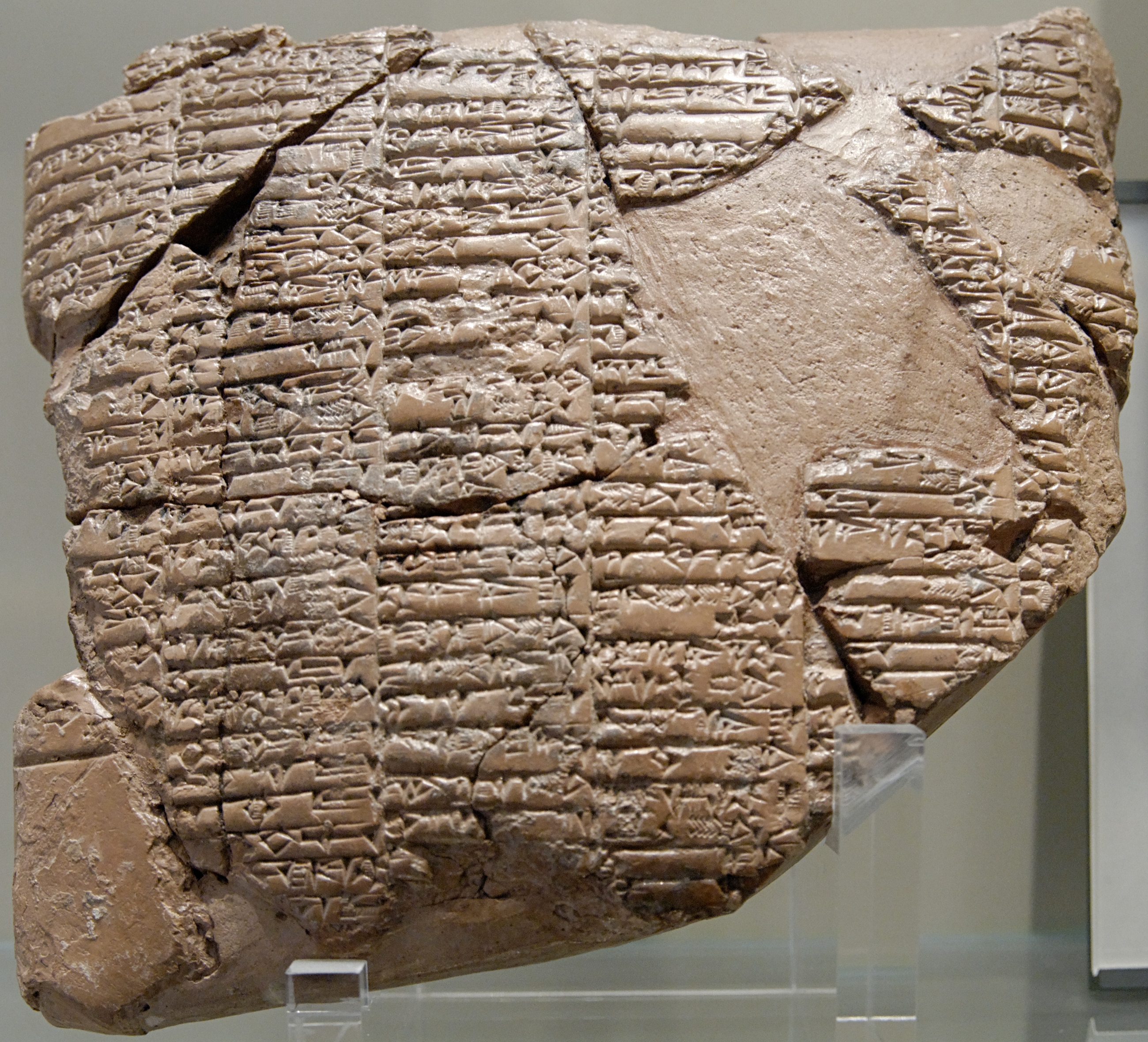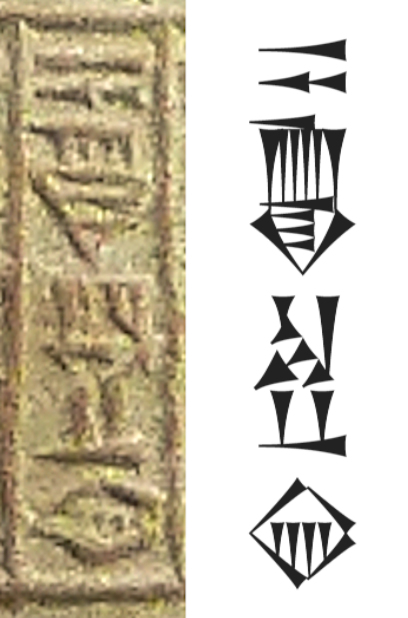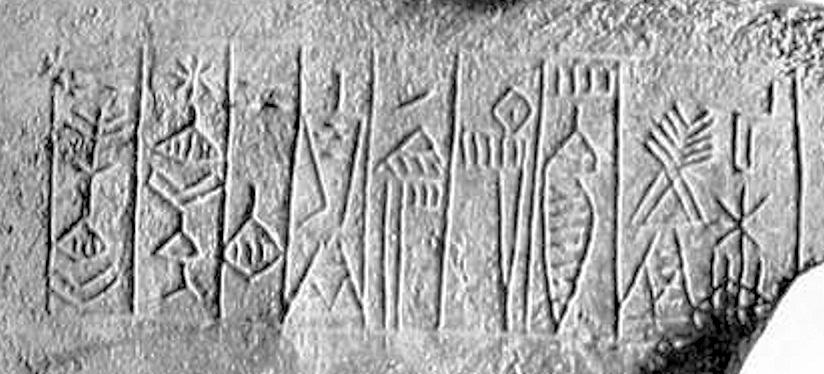|
Manishtushu
Manishtushu (Man-ištušu) (, ''Ma-an-ish-tu-su''; died 2255 BC) was the third (or possibly second) king of the Akkadian Empire, reigning 15 years c. 2270 BC until his death c. 2255 BC. His name means "Who is with him?". He was the son of Sargon of Akkad, Sargon the Great, the founder of the Akkadian Empire, and he was succeeded by his son, Naram-Sin of Akkad, Naram-Sin who also deified him posthumously. A cylinder seal, of unknown provenance, clearly from the reign of Naram-Sin or later, refers to the deified Manishtushu i.e. "(For) the divine Man-istusu: Taribu, the wife of Lugal-ezen, had (this seal) fashioned". Texts from the later Ur III period show offerings to the deified Manishtushu (spelled ᵈMa-iš-ti₂-su or ᵈMa-an-iš-ti₂-su). The same texts mention a town of ᵈMa-an-iš-ti₂-su where there was a temple of Manishtushu. This temple was known in the Sargonic period as Ma-an-iš-t[i-s]uki. Biography Manishtushu was the third king of the Akkadian Empire accordi ... [...More Info...] [...Related Items...] OR: [Wikipedia] [Google] [Baidu] |
Ilshu-rabi
Ilshu-rabi, also Ilšu-rabi ( ''Il-shu-rabi''; died 2255 BC) was a ruler of Pashime around 2269–2255 BC. He was a vassal of the Akkadian Empire ruler Manishtushu. While Ilshu-rabi was in charge of Pashime, another Governor of Manistushu named Eshpum was in charge of Elam, in the city of Susa Susa ( ) was an ancient city in the lower Zagros Mountains about east of the Tigris, between the Karkheh River, Karkheh and Dez River, Dez Rivers in Iran. One of the most important cities of the Ancient Near East, Susa served as the capital o .... Stele of Ilshu-rabi A relief of Ilshu-rabi is known, which was discovered in Tell Abu Sheeja, ancient Pashime. The inscription on the stele reads: File:Inscription on the Stele of Ilshu-rabi.jpg, Inscription on the Stele of Ilshu-rabi File:Ilshu-rabi (name).jpg, The name "Ilshu-rabi" on his stele. File:Bashime-ki.jpg, The name of Pashime ( ''ba-si-meKI'') on the stele of Ilšu-rabi Manishtushu Obelisk The name of Ilšu-rabi as Gove ... [...More Info...] [...Related Items...] OR: [Wikipedia] [Google] [Baidu] |
Akkadian Empire
The Akkadian Empire () was the first known empire, succeeding the long-lived city-states of Sumer. Centered on the city of Akkad (city), Akkad ( or ) and its surrounding region, the empire united Akkadian language, Akkadian and Sumerian language, Sumerian speakers under one rule and exercised significant influence across Mesopotamia, the Levant, and Anatolia, sending military expeditions as far south as Dilmun and Magan (civilization), Magan (modern United Arab Emirates, Saudi Arabia, Bahrain, Qatar and Oman) in the Arabian Peninsula.Mish, Frederick C., Editor in Chief. "Akkad" ''iarchive:webstersninthne000merr, Webster's Ninth New Collegiate Dictionary''. ninth ed. Springfield, MA: Merriam-Webster 1985. ). The Akkadian Empire reached its political peak between the 24th and 22nd centuries BC, following the conquests by its founder Sargon of Akkad. Under Sargon and his successors, the Akkadian language was briefly imposed on neighboring conquered states such as Elam and Guti ... [...More Info...] [...Related Items...] OR: [Wikipedia] [Google] [Baidu] |
Rimush
Rimush (or Rimuš, ''Ri-mu-uš''; died 2270 BC) was the second king of the Akkadian Empire. He was the son of Sargon of Akkad. He was succeeded by his brother Manishtushu, and was an uncle of Naram-Sin of Akkad. Naram-Sin posthumously deified Sargon and Manishtushi but not his uncle. His sister was Enheduana, considered the earliest known named author in world history. Little is known about his brother Shu-Enlil. There was a city, Dur-Rimuš (Fortress of Rimush), located near Tell Ishchali and Khafajah. It was known to be a cult center of the storm god Adad. Biography According to the ''Sumerian King List'', his reign lasted nine years (though variant copies read seven or fifteen years). There is one surviving year-name for an unknown year of his reign: ''mu ud-nun / adab hul-a'' "year in which Adab was destroyed". Tradition gives that he was assassinated, as recorded in the '' Bārûtu'', a compendium of extispicy dared to the first millennium BC: "If the heart is like a ... [...More Info...] [...Related Items...] OR: [Wikipedia] [Google] [Baidu] |
Naram-Sin Of Akkad
Naram-Sin, also transcribed Narām-Sîn or Naram-Suen (: '' DNa-ra-am D Sîn'', meaning "Beloved of the Moon God Sîn", the "𒀭" a determinative marking the name of a god; died 2218 BC), was a ruler of the Akkadian Empire, who reigned –2218 BC ( middle chronology), and was the third successor and grandson of King Sargon of Akkad. Under Naram-Sin the empire reached its maximum extent. He was the first Mesopotamian king known to have claimed divinity for himself, taking the title "God of Akkad", and the first to claim the title " King of the Four Quarters". His military strength was strong as he crushed revolts and expanded the empire to places like Turkey and Iran. He became the patron city god of Akkade as Enlil was in Nippur. His enduring fame resulted in later rulers, Naram-Sin of Eshnunna and Naram-Sin of Assyria as well as Naram-Sin of Uruk, assuming the name. Biography Naram-Sin was a son of Manishtushu. He was thus a nephew of King Rimush and grandson of Sarg ... [...More Info...] [...Related Items...] OR: [Wikipedia] [Google] [Baidu] |
Akkad (city)
Akkad (; also spelt Accad, Akkade, a-ka₃-de₂ki or Agade, Akkadian: , also URI KI in Sumerian during the Ur III period) was the capital of the Akkadian Empire, which was the dominant political force in Mesopotamia during a period of about 150 years in the last third of the 3rd millennium BC. Its location is unknown. In the early days of research various unidentified mounds were considered as the location of Akkad. In modern times most of the attention has focused on an area roughly defined by 1) near Eshnunna, 2) near Sippar, 3) not far from Kish and Babylon, 4) near the Tigris River, and 5) not far from the Diyala River – all within roughly 30 kilometers of modern Baghdad in central Iraq. There are also location proposals as far afield as the Mosul area in northern Iraq. The main goddess of Akkad was Ishtar-Annunitum or ''‘Aštar-annunîtum'' (Warlike Ishtar), though it may have been a different aspect, Istar- Ulmašītum. Her husband Ilaba was also revered. Is ... [...More Info...] [...Related Items...] OR: [Wikipedia] [Google] [Baidu] |
Pashime
Pašime, (also Bašime and Mišime) ( ''ba-si-meKI''), was an ancient region of southern Mesopotamia. It has recently been identified with Tell Abu Sheeja, Iraq, about 7 km from Iraq's border with Iran (about 100 kilometers west of Susa). It lies about 70 kilometers southeast of modern Baghdad and 60 kilometers north of the modern city of Amarah. Pashime corresponded to an area of interaction between Mesopotamia and Elam and was occupied from the Ubaid and Uruk periods in the 4th Millennium BC until the Old Babylonian period in the early 2nd Millennium BC. Its tutelary god was Šuda. The city is known from texts to have bordered on the ancient polity of Huhnur (possibly Tappeh Bormi). The city of Pašime is thought to have been on the Persian Gulf which at that time extended much further north. History Pottery finds show the site was occupied beginning in the Ubaid and Uruk period (4th Millennium BC), through the Early Dynastic period and ending in the Old Babylonian period ... [...More Info...] [...Related Items...] OR: [Wikipedia] [Google] [Baidu] |
Sippar
Sippar (Sumerian language, Sumerian: , Zimbir) (also Sippir or Sippara) was an ancient Near Eastern Sumerian and later Babylonian city on the east bank of the Euphrates river. Its ''Tell (archaeology), tell'' is located at the site of modern Tell Abu Habbah near Yusufiyah in Iraq's Baghdad Governorate, some north of Babylon and southwest of Baghdad. The city's ancient name, Sippar, could also refer to its sister city, Sippar-Amnanum (located at the modern site of Tell ed-Der); a more specific designation for the city here referred to as Sippar was Sippar-Yaḫrurum (Sippar-Jaḫrurum). The name comes from the Amorite Yaḫrurum tribe that lived in the area along with the Amorite Amnanum tribe. In Sippar was the site where the Babylonian Map of the World was found. History While pottery finds indicate that the site of Sippar was in use as early as the Uruk period, substantial occupation occurred only in the Early Dynastic Period (Mesopotamia), Early Dynastic and Akkadian Empire pe ... [...More Info...] [...Related Items...] OR: [Wikipedia] [Google] [Baidu] |
Sargon Of Akkad
Sargon of Akkad (; ; died 2279 BC), also known as Sargon the Great, was the first ruler of the Akkadian Empire, known for his conquests of the Sumerian city-states in the 24th to 23rd centuries BC.The date of the reign of Sargon is highly uncertain, depending entirely on the (conflicting) regnal years given in the various copies of the Sumerian King List, specifically the uncertain duration of the Gutian dynasty. The added regnal years of the Sargonic and the Gutian dynasties have to be subtracted from the accession of Ur-Nammu of the Third Dynasty of Ur, which is variously dated to either 2047 BC ( Short Chronology) or 2112 BC ( Middle Chronology). An accession date of Sargon of 2334 BC assumes: (1) a Sargonic dynasty of 180 years (fall of Akkad 2154 BC), (2) a Gutian interregnum of 42 years and (3) the Middle Chronology accession year of Ur-Nammu (2112 BC). He is sometimes identified as the first person in recorded history to rule over an empire. He was the founder of ... [...More Info...] [...Related Items...] OR: [Wikipedia] [Google] [Baidu] |
Elam
Elam () was an ancient civilization centered in the far west and southwest of Iran, stretching from the lowlands of what is now Khuzestan and Ilam Province as well as a small part of modern-day southern Iraq. The modern name ''Elam'' stems from the Sumerian language, Sumerian transliteration ''elam(a)'', along with the later Akkadian language, Akkadian ''elamtu'', and the Elamite ''haltamti.'' Elamite states were among the leading political forces of the Ancient Near East. In classical literature, Elam was also known as Susiana ( ; ''Sousiānḗ''), a name derived from its capital Susa. Elam was part of the early Cities of the Ancient Near East, urbanization of the Near East during the Chalcolithic period (Copper Age). The emergence of written records from around 3000 BC also parallels Sumerian history, where slightly earlier records have been found. In the Old Elamite period (Bronze Age, Middle Bronze Age), Elam consisted of kingdoms on the Iranian plateau, centered in Ansha ... [...More Info...] [...Related Items...] OR: [Wikipedia] [Google] [Baidu] |
Eshpum
Eshpum ( ''esh18-pum'', formerly read Geba; died 2255 BC) was an Akkadian Governor of Elam around 2269–2255 BC. Reign In the Akkadian Empire he was a vassal of king Manishtushu. While Eshpum was in charge of Elam, another Governor of Manistushu named Ilshu-rabi Ilshu-rabi, also Ilšu-rabi ( ''Il-shu-rabi''; died 2255 BC) was a ruler of Pashime around 2269–2255 BC. He was a vassal of the Akkadian Empire ruler Manishtushu. While Ilshu-rabi was in charge of Pashime, another Governor of Manistushu named ... was in charge of Pashime, in the coastal area. Attestations Votive statue An archaic statue of an orant is known, which was re-dedicated about 500 years later by Eshpum. It reads: File:Eshpum votive statue.jpg, Archaic votive statue (c. 2700 BCE) dedicated by Eshpum, with his inscription in the back File:Exhibit at Lovre Museum, Paris 06.jpg, Detail of the statue Seal inscriptions "Eshpum, Governor of Elam" Another inscription of Eshpum is known, which reads "Esh ... [...More Info...] [...Related Items...] OR: [Wikipedia] [Google] [Baidu] |
Nineveh
Nineveh ( ; , ''URUNI.NU.A, Ninua''; , ''Nīnəwē''; , ''Nīnawā''; , ''Nīnwē''), was an ancient Assyrian city of Upper Mesopotamia, located in the modern-day city of Mosul (itself built out of the Assyrian town of Mepsila) in northern Iraq. It is located on the eastern bank of the Tigris River and was the capital and largest city of the Neo-Assyrian Empire, as well as the largest city in the world for several decades. Today, it is a common name for the half of Mosul that lies on the eastern bank of the Tigris, and the country's Nineveh Governorate takes its name from it. It was the largest city in the world for approximately fifty years until the year 612 BC when, after a bitter period of civil war in Assyria, it was sacked by a coalition of its former subject peoples including the Babylonians, Medes, and Scythians. The city was never again a political or administrative centre, but by Late Antiquity it was the seat of an Assyrian Christian bishop of the Assyrian Ch ... [...More Info...] [...Related Items...] OR: [Wikipedia] [Google] [Baidu] |









